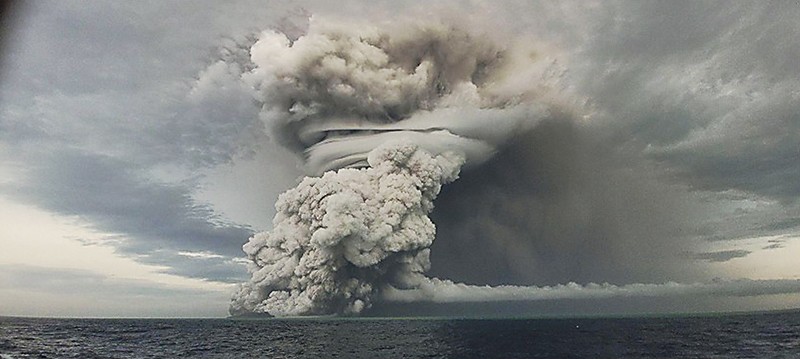Volcanic eruptions have always been considered dangerous and fatal due to the rigorous flaring up of huge lava “flows” and the divulgence of a large number of harmful gases. An incident of a similar nature has been witnessed near the Pacific nation of Tonga in January when this underwater volcano erupted into immense flames, generating ripples into the atmosphere to a considerable extent. However, it should be noted that the deadly yet historical eruption of a volcano that was exactly of the same kind took place in 1883, and has been termed “Krakatau.” It generated huge ripples comparable to those engendered recently. Researchers said that the shockwaves produced as a result of this eruption were so powerful that they had a much larger amplitude. The tsunami experts have conducted a number of studies on this explosion, which have been analyzed from different aspects.

One study indicates that the powerful pulses spawn the ripples to extend into the atmosphere, thereby releasing a massive amount of energy. This energy, in the form of fumes and smoke, smacked into the mesosphere, one of the layers of the Earth’s atmosphere. Not only the mesosphere, but the lamb waves which flared up from this volcano hit the ionosphere as well, with an amplitude of 280 miles (450 km). According to researchers, these lamb waves were the strongest and were leading all the waves produced from this volcanic eruption.

Apart from these Lamb waves, certain small tsunamis also took place due to the air pressure disturbances in the nearby areas. Surprisingly, the most devastating impact of this meta-tsunami was on the Atlantic Ocean and the Mediterranean Sea, mainly originating from the Pacific Ocean. As per the Smithsonian’s Global Volcanism Program, “It’s one of 12 known underwater volcanoes in the Tonga-Kermadec volcanic arc, a geological structure that runs along the western edge of the Pacific plate of the Earth’s crust”.
It is very rare for researchers to observe and record Lamb waves as they mostly emerge from the huge disturbances of explosions in the atmosphere. Another thing to consider is that the strength and the immensity of energy emitted as a result of this eruption are similar to the TNT waves exploding up to a magnitude of 4 to 18 megatons, thus equivalent to more than 100 Hiroshima bombs exploding at once.

Robin Matoza, an associate professor in the Department of Earth Science at the University of California, Santa Barbara, said that “Lamb waves are not usually observed for smaller volcanic eruptions, and we were able to simulate the Hunga Tonga Lamb wave just two days after the event”. Moreover, the sounds having smaller wavelengths were audible to the human ear and were heard in the form of small subsequent “booms” all over Alaska.


